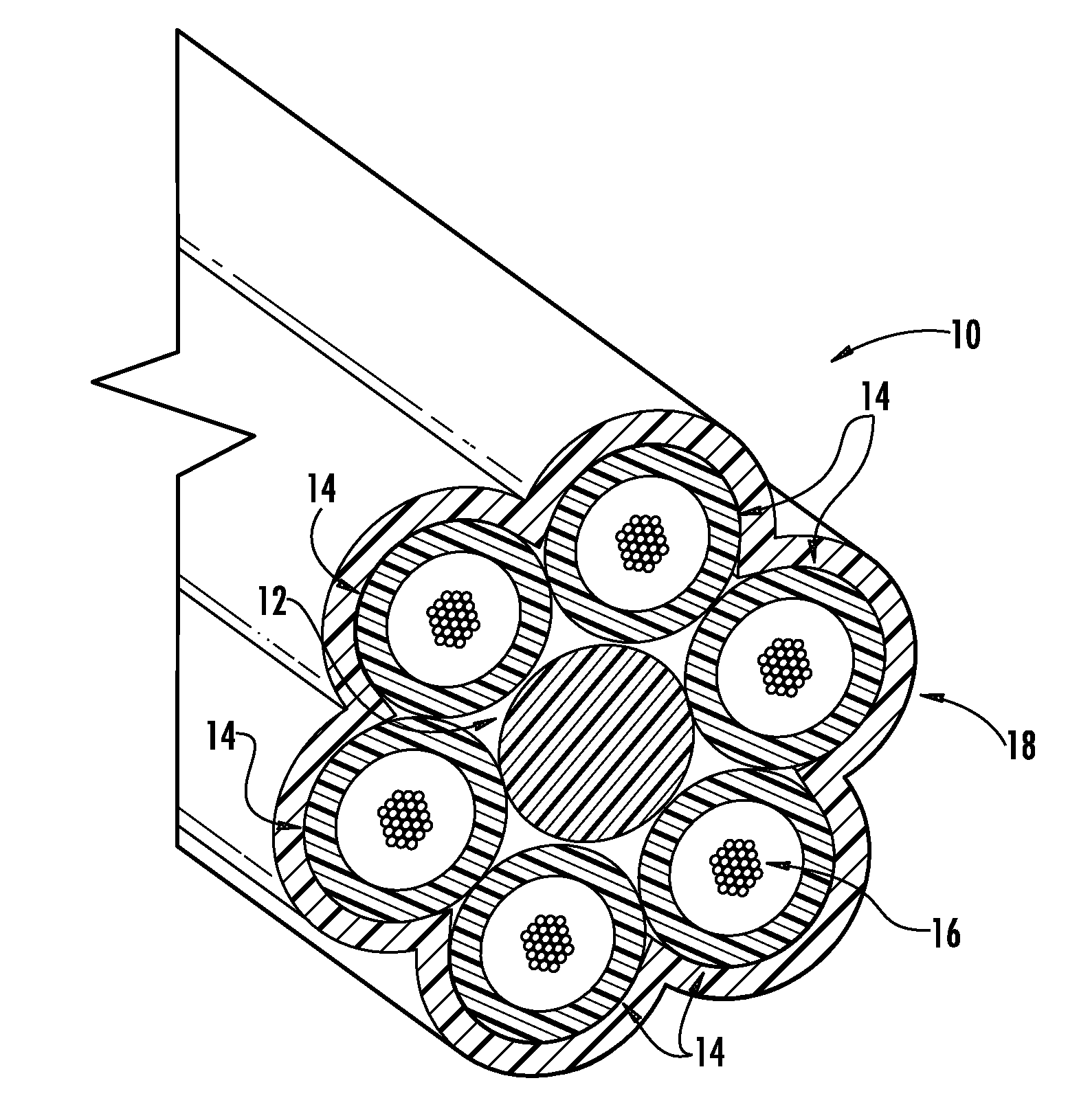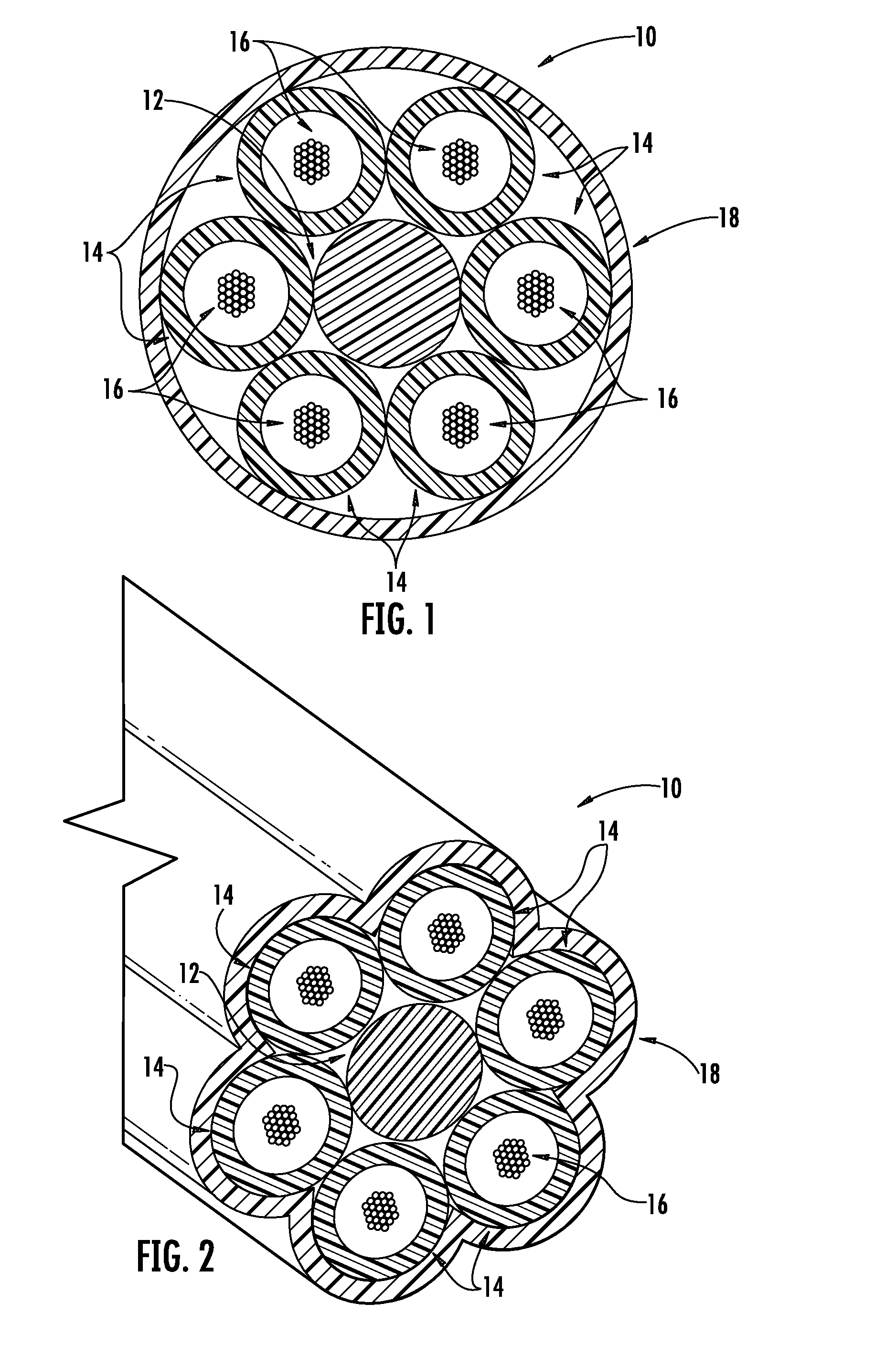High-fiber-density optical fiber cable
a fiber optic cable, high-density technology, applied in the direction of optics, fibre mechanical structures, instruments, etc., can solve the problems of signal attenuation, and unsatisfactory mid-span storage performance of constituent buffer tubes positioned in pedestals, cabinets, or other optical fiber enclosures, and achieve high cable fiber densities and improve attenuation performan
- Summary
- Abstract
- Description
- Claims
- Application Information
AI Technical Summary
Benefits of technology
Problems solved by technology
Method used
Image
Examples
example
[0107]Table 1 (below) compares a comparative optical-fiber cable to an exemplary optical-fiber cable of the present invention.
[0108]
TABLE 1InventiveComparativeCableCablecable configurationbuffer tubes per cable612fibers per buffer tube2412optical-fibers per cable144144optical-fiber informationoptical-fiber diameter (μm)242242optical-fiber area (μm2)45,99645,996total optical-fiber area (mm2)6.6236.623buffer-tube informationtube outer diameter (mm)31.9tube inner diameter (mm)2.21.2buffer-tube area (mm2)3.8011.131total buffer-tube area (mm2)22.80813.572cable informationcable outer diameter (mm)10.511.1cable outer area (mm2)86.59096.769cable inner diameter (mm)9.39.9cable inner area (mm2)67.92976.977cable propertiescable filling coefficient (inner)0.0980.086outer cable filling coefficient0.0760.068cable fiber density (fibers / mm2)1.6631.488cumulative buffer tube0.2900.488filling coefficient
[0109]Both optical-fiber cables depicted in Table 1 contain 144 optical fibers and were designed to...
PUM
 Login to View More
Login to View More Abstract
Description
Claims
Application Information
 Login to View More
Login to View More - R&D
- Intellectual Property
- Life Sciences
- Materials
- Tech Scout
- Unparalleled Data Quality
- Higher Quality Content
- 60% Fewer Hallucinations
Browse by: Latest US Patents, China's latest patents, Technical Efficacy Thesaurus, Application Domain, Technology Topic, Popular Technical Reports.
© 2025 PatSnap. All rights reserved.Legal|Privacy policy|Modern Slavery Act Transparency Statement|Sitemap|About US| Contact US: help@patsnap.com


